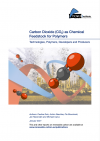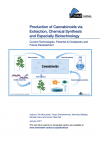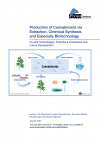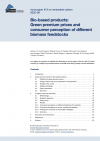Showing 281–300 of 607
-
Bio-based Building Blocks and Polymers – Global Capacities, Production and Trends 2020 – 2025 – Graphics: Figure 5 (PNG)
Markets & Economy
335 Downloads
335 Downloads
2021-01
FREE
Plus 19% MwSt.335
Downloads -
Bio-based Building Blocks and Polymers – Global Capacities, Production and Trends 2020 – 2025 – Graphics: Figure 6 (PNG)
Markets & Economy
491 Downloads
491 Downloads
2021-01
FREE
Plus 19% MwSt.491
Downloads -
Bio-based Building Blocks and Polymers – Global Capacities, Production and Trends 2020 – 2025 – Graphics: Figure 7 (PNG)
Markets & Economy
447 Downloads
447 Downloads
2021-01
FREE
Plus 19% MwSt.447
Downloads -
Bio-based Building Blocks and Polymers – Global Capacities, Production and Trends 2020 – 2025 – Graphics: Figure 8 (PNG)
Markets & Economy
380 Downloads
380 Downloads
2021-01
FREE
Plus 19% MwSt.380
Downloads -
Bio-based Building Blocks and Polymers – Global Capacities, Production and Trends 2020 – 2025 – Graphics: Figure 9 (PNG)
Markets & Economy
328 Downloads
328 Downloads
2021-01
FREE
Plus 19% MwSt.328
Downloads -
Bio-based Building Blocks and Polymers – Global Capacities, Production and Trends 2020 – 2025 – Short Version
Markets & Economy
16 Pages
2918 Downloads
2918 Downloads
2021-01
FREE
Plus 19% MwSt.2918
DownloadsReport on the global bio-based polymer market 2020 – A deep and comprehensive insight into this dynamic market
The year 2020 was a promising year for bio-based polymers: Sold out PLA in 2019 has led to the installation of increased capacities, PE and PP made from bio-based naphtha are breaking ground and future expansion for bio-based polyamides as well as for PBAT, PHAs and casein polymers is on the horizon. A lower production is only observed for bio-based PET.
-
Bio-based Building Blocks and Polymers – Global Capacities, Production and Trends 2020 – 2025 – Graphics: Figure 10 (PNG)
Markets & Economy
370 Downloads
370 Downloads
2021-01
FREE
Plus 19% MwSt.370
Downloads -
Carbon dioxide (CO2) as chemical feedstock for polymers – technologies, polymers, developers and producers
Markets & Economy
100 Pages

2021-01
500 € – 1,000 € ex. tax
Plus 19% MwSt.Press
release Select
licenceCompletely revised and extended third version of nova’s technology and trend report “Carbon Dioxide (CO2) as Chemical Feedstock for Polymers – Technologies, Polymers, Developers and Producers” available
The nova report addresses the polymer industry, brands, technology scouts, investors, and policy makers. The report provides 100 pages of information around CO2 utilisation for chemical building blocks and polymers.
-
Bio-based Building Blocks and Polymers – Global Capacities, Production and Trends 2020 – 2025 – Graphics: Figure 1 (PNG)
Markets & Economy
504 Downloads
504 Downloads
2021-01
FREE
Plus 19% MwSt.504
Downloads -
Bio-based Building Blocks and Polymers – Global Capacities, Production and Trends 2020 – 2025 – Graphics: Figure 2 (PNG)
Markets & Economy
463 Downloads
463 Downloads
2021-01
FREE
Plus 19% MwSt.463
Downloads -
Bio-based Building Blocks and Polymers – Global Capacities, Production and Trends 2020 – 2025
Markets & Economy
338 Pages

2021-01
100 € – 500 € ex. tax
Plus 19% MwSt.Press
release Select
licenceReport on the global bio-based polymer market 2020 – A deep and comprehensive insight into this dynamic market
The year 2020 was a promising year for bio-based polymers: Sold out PLA in 2019 has led to the installation of increased capacities, PE and PP made from bio-based naphtha are breaking ground and future expansion for bio-based polyamides as well as for PBAT, PHAs and casein polymers is on the horizon. A lower production is only observed for bio-based PET.
-
Bio-based Building Blocks and Polymers – Global Capacities, Production and Trends 2020 – 2025 – Graphics: Figure 3 (PNG)
Markets & Economy
489 Downloads
489 Downloads
2021-01
FREE
Plus 19% MwSt.489
Downloads -
Carbon dioxide (CO2) as chemical feedstock for polymers – technologies, polymers, developers and producers − Short Version
Markets & Economy
12 Pages
2371 Downloads
2371 Downloads
2021-01
FREE
Plus 19% MwSt.2371
DownloadsCompletely revised and extended third version of nova’s technology and trend report “Carbon Dioxide (CO2) as Chemical Feedstock for Polymers – Technologies, Polymers, Developers and Producers” available
The nova report addresses the polymer industry, brands, technology scouts, investors, and policy makers. The report provides 100 pages of information around CO2 utilisation for chemical building blocks and polymers.
-
Bio-based Building Blocks and Polymers – Global Capacities, Production and Trends 2020 – 2025 – Graphics: Figure 4 (PNG)
Markets & Economy
778 Downloads
778 Downloads
2021-01
FREE
Plus 19% MwSt.778
Downloads -
Production of Cannabinoids via Extraction, Chemical Synthesis and Especially Biotechnology – Preview
Markets & Economy, Sustainability & Health
8 Pages
344 Downloads
344 Downloads
2021-01
FREE
Plus 19% MwSt.344
DownloadsHuge market potential for CBD and other cannabinoids – how best to produce them?
Cannabis removed from the UN prohibition schedule and CBD not considered as a narcotic drug – Two major decisions to drive further research to explore the full potential of one of the major and longest established medicinal plants
The new report “Production of Cannabinoids via Extraction, Chemical Synthesis and Especially Biotechnology – Current Technologies, Potential & Drawbacks and Future Development” provides all information on production technologies, medical applications and political framework conditions. The Report will guide you through the complex synthesis of cannabinoids, state-of-the-art methods for extraction and production and will extensively show the major hidden potential and synergistic effects of biotechnological cannabinoid production. The report is aimed at experts in the pharmaceutical and biotech industry and provides deep insights into (bio)chemical reactions, processes and producers. The main authors are biotechnology experts and physicians from the nova-Institute, Dr. Pia Skoczinski and Dr. med. Franjo Grotenhermen, and the chemist Dr. rer. nat. Bernhard Beitzke, who has been advising the “European Industrial Hemp Association” (EIHA) as an expert for years. The 142-page technology report provides in-depth information on established and emerging biotechnological approaches on the production of cannabinoids, as well as an overview on the state-of-the-art production methods using plant extraction and chemical synthesis. An extensive description of pharmacological effects, therapeutic potential and medicinal applications for ∆9-tetrahydrocannabinol (∆9-THC) and cannabidiol (CBD), together with a short excursus on the EU regulatory framework for cannabinoids, conclude this comprehensive study. Additionally, 59 companies active in cannabinoid production are listed, from which 20 specialised in biotechnological production and chemical synthesis are described in detail.
-
“Bioeconomy: More than Circular Economy” − Graphic
Markets & Economy, Policy, Sustainability & Health
1 Page
3135 Downloads
3135 Downloads
2021-01
FREE
3135
Downloads -
Production of Cannabinoids via Extraction, Chemical Synthesis and Especially Biotechnology
Markets & Economy, Sustainability & Health
148 Pages

2021-01
2,000 € – 10,000 € ex. tax
Plus 19% MwSt.Press
release Select
licenceHuge market potential for CBD and other cannabinoids – how best to produce them?
Cannabis removed from the UN prohibition schedule and CBD not considered as a narcotic drug – Two major decisions to drive further research to explore the full potential of one of the major and longest established medicinal plants
The new report “Production of Cannabinoids via Extraction, Chemical Synthesis and Especially Biotechnology – Current Technologies, Potential & Drawbacks and Future Development” provides all information on production technologies, medical applications and political framework conditions. The Report will guide you through the complex synthesis of cannabinoids, state-of-the-art methods for extraction and production and will extensively show the major hidden potential and synergistic effects of biotechnological cannabinoid production. The report is aimed at experts in the pharmaceutical and biotech industry and provides deep insights into (bio)chemical reactions, processes and producers. The main authors are biotechnology experts and physicians from the nova-Institute, Dr. Pia Skoczinski and Dr. med. Franjo Grotenhermen, and the chemist Dr. rer. nat. Bernhard Beitzke, who has been advising the “European Industrial Hemp Association” (EIHA) as an expert for years. The 142-page technology report provides in-depth information on established and emerging biotechnological approaches on the production of cannabinoids, as well as an overview on the state-of-the-art production methods using plant extraction and chemical synthesis. An extensive description of pharmacological effects, therapeutic potential and medicinal applications for ∆9-tetrahydrocannabinol (∆9-THC) and cannabidiol (CBD), together with a short excursus on the EU regulatory framework for cannabinoids, conclude this comprehensive study. Additionally, 59 companies active in cannabinoid production are listed, from which 20 specialised in biotechnological production and chemical synthesis are described in detail.
-
nova-paper #13: Bio-based products: Green premium prices and consumer perception of different biomass feedstocks
Markets & Economy
30 Pages
2065 Downloads
2065 Downloads
2020-12
FREE
Plus 19% MwSt.2065
Downloads -
322 Downloads
2020-12
FREE
322
Downloads -
238 Downloads
2020-12
FREE
238
Downloads


















